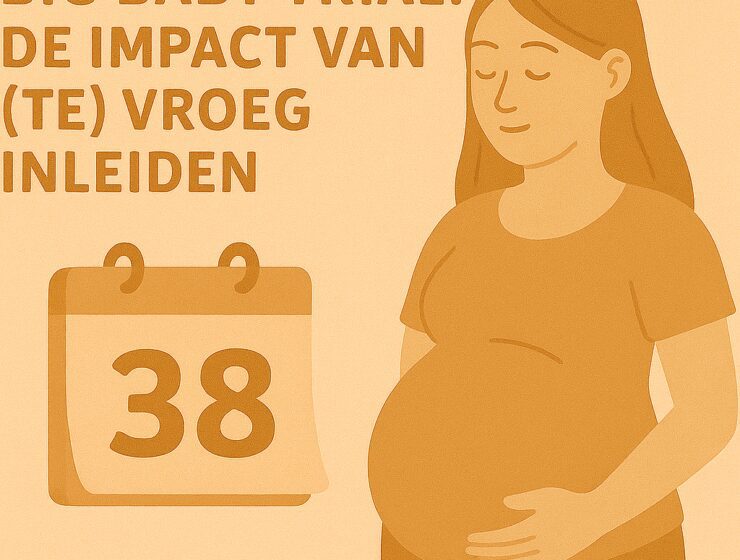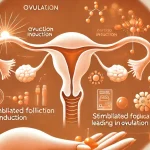What exactly does Placenta Praevia Marginalis, a low-lying placenta, mean?
Bee Placenta Praevia Marginally, the placenta is located low in the uterus, near the cervix. This can cause complications during pregnancy, such as bleeding and limiting natural birth options. Sometimes the placenta can even partially cover the cervix. It is therefore important to diagnose this early and carry out regular checks to closely monitor the situation.
Some symptoms associated with this condition include bleeding without pain and a feeling of pressure in the pelvis. Please note that not all women have obvious symptoms, making regular ultrasounds essential. At Midwives Lelystad we provide personal attention and guidance to ensure that you and your baby stay safe. Our protocols include it
-
- Regular ultrasounds to check the position of the placenta
-
- Advice about rest and physical activities
-
- Health monitoring during the pregnancy
| Factor | Influence |
|---|---|
| Previous cesarean section | Increases risk of Placenta Praevia |
| Multiple pregnancies | Increases the chance of abnormal placental position |
Causes andrisk factors of Placenta Praevia Marginalis
Placenta praevia marginalis, a condition in which the placenta is close to or over the cervix, can be caused by several factors. First of all, previous caesarean sections or uterine operations play a role. These can leave behind scar tissue, which affects the position of the placenta. Furthermore, women with multiple pregnancies or twins have an increased risk, due to the extra space that the placenta must take up. Also possible smoking during pregnancy because it reduces the blood supply to the uterus, which can cause the placenta to position itself differently.
In addition to these causes, there are also specific risk factors that increase the risk of placenta praevia marginalis. For example, a higher age of the mother is a significant factor; women over 35 have a greater chance. Women with a history of placenta previa are also closely monitored, as the condition can return. Even the shape of the uterus can play a role: in some women the uterus is naturally shaped differently, which contributes to the increased risk.
| Cause | Risk |
|---|---|
| Previous cesarean sections | High |
| Multiple pregnancies | Resourse |
| Smoking during pregnancy | High |
| Age over 35 | High |
Symptoms and diagnosis of Placenta Previa Marginalis
Bee Placenta Praevia Marginalis the placenta is close to or touching the cervix. This can be different symptoms cause, such as:
-
- Light to heavy vaginal bleeding, especially after the 20th week of pregnancy.
-
- No painful contractions or cramps, unlike some other pregnancy complications.
-
- Possible weakness or dizziness due to blood loss.
The diagnosis Placenta Praevia Marginalis is usually done by means of an ultrasound. During routine ultrasound scans, the position of the placenta can be checked. If there is any doubt whether complications arise, a specialist can be consulted. Moreover, in some cases a transvaginal ultrasound provide additional clarity. Below is an overview of different diagnostic methods:
| Method | Description |
|---|---|
| Transabdominal Ultrasound | Standard ultrasound through the abdomen, often during routine checks. |
| Transvaginal Ultrasound | More detailed ultrasound through the vagina to accurately determine the position of the placenta. |
The most important thing is to keep a close eye on how you feel and discuss any symptoms immediately with your midwife. Midwives Lelystad we are there for you and always discuss the steps and treatment options that best suit your situation.
Treatment options and medical interventions
Depending on the severity of the placenta praevia marginalis and the gestational age, different treatment options are available. One of the most important approaches is bed rest, which can monitor the progress of the condition and prevent complications. In severe cases, hospitalization and intensive monitoring may be necessary to keep mother and child safe. Possible treatments include:
-
- Medication: For reducing bleeding.
-
- Cesarean section: Planned for a safe birth when vaginal delivery is not possible or safe.
-
- Monitoring: Regular ultrasound scans to check the position of the placenta.
In addition, adjusting daily activities can play a major role in managing the condition. If you have any questions or are unsure about the recommended procedures, it is always a good idea to discuss these with your midwife. Bee Midwives Lelystad we are ready to support and guide you through the entire process, so that both you and your baby stay healthy.
| Therapy | Advantages | Cons |
|---|---|---|
| Bed rest | Reduces risk of bleeding | Can cause feelings of loading |
| Medication | Controls bleeding | Possible side effects |
| Cesarean section | Safe delivery | Longer recovery time |
It is crucial to have ongoing consultation with your healthcare provider and put your comfort and safety first. Have confidence in your treatment plan and remember that we are Midwives Lelystad will guide you every step of the way.
Tips for dealing with Placenta Praevia Marginalis, a low-lying placenta, during your pregnancy
When dealing with Placenta Praevia Marginalis, there are a number of smart tips that can help your pregnancy go smoothly. Make sure you keep in regular contact with your midwife and attend all scheduled appointments. This is crucial because your midwife can give you the best advice and keep a close eye on your situation. In addition, you can limiting physical activity such as heavy lifting and intensive sports, contribute to a safe pregnancy.
You can also benefit greatly from monitoring your general health. Sufficient restA balanced diet and avoiding stressful situations are essential steps. You can also consider wearing a pregnancy support band for extra comfort and support. If you experience bleeding, it is imperative to seek immediate medical attention.
| Tip | Advantages |
|---|---|
| Regular checks | Early detection of complications |
| Limit physical activity | Smaller chance of bleeding |
| Healthy lifestyle | Better well-being and less stress |
Resume
So, now you know what Placenta Praevia Marginalis is and what you can expect. Hopefully you have a better idea of this condition and are a little more reassured. At Midwives Lelystad we are always ready to support you and answer all your questions. Do you have doubts or concerns about your pregnancy? Don't hesitate to contact us. Our experienced midwives are happy to help you to ensure that your pregnancy goes as smoothly as possible. Together with you we will make this special time a beautiful and safe experience!
Stay informed about more useful information and tips by following our blog and social media. We're here for you, every step of the way.








